“We sleep peaceably in our beds at night only because rough men stand ready to do violence on our behalf.” - George Orwell
Introduction:
India is a huge country with a lot to offer. Some of its citizens live on the outskirts of India, far from the Indian centre. People from these areas and border states have been integrated into the national mainstream thanks to the military. A soldier is frequently the first Indian to go out to these communities and inform the locals that they are Indians. The Indian Armed Forces, commonly known as the Bharatiya Sashastra Sena, are the country's military forces. The Indian Army, Navy, and Air Force are all part of the Indian military.
The Indian Coast Guard and paramilitary organizations (such as the Assam Rifles and the Special Frontier Force), as well as various inter-service commands and institutions like the Strategic Forces Command, the Andaman and Nicobar Command, and the Proper Planning and implementation Staff, support the Indian army in peace operations. The Indian Armed Forces are led by the President of India, who is also the Supreme Commander.
In this blog, we dedicate it to honour all the unsung heroes who have made the ultimate sacrifice while safeguarding the borders of our country.
Honorary Capt Karam Singh
Honorary Captain Karam Singh was born at Bhaliawala village in Punjab's Sangrur district on September 15, 1915. Karam Singh, the son of a farmer named Sardar Uttam Singh, had constantly aspired to lead a life of thrills and excitement since he was a child. Karam Singh's uncle was a JCO in the army, and he aspired to continue in his footsteps after being fascinated by his army life. At the age of 26, Hon Capt Karam Singh enlisted in the army on September 15, 1941. In August 1942, he was recruited into the illustrious Sikh Regiment after receiving his combat training in Ranchi. He served in World War II and demonstrated his bravery as a loyal and courageous soldier. As a result, the British government gave him the Military Medal, the country's highest gallantry medal.
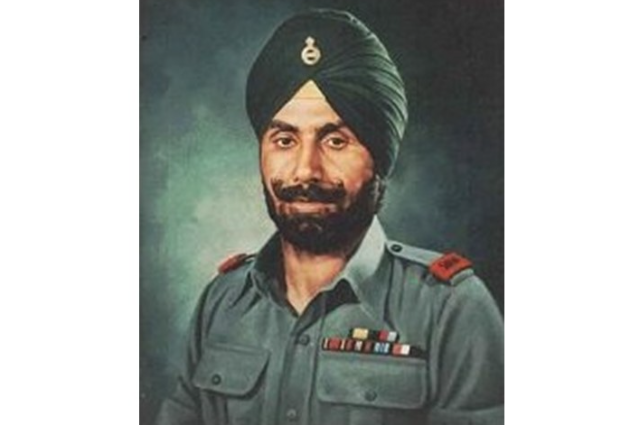
Source: honourpoint
- Indo Pak War: Oct 1948
The Indian Army made significant victories in the Tithwal region during the J&K operations in the summer of 1948. They then took control of the Tithwal area on the 23rd of May. The enemy had no reason to call off the mission. They weren't about to let Tithwal go without a fight. The Battle of Tithwal continued for months, with the Pakistani army striving for control at all times. They were unable, however, to break through the Indian barriers. The Pakistan Army's major goal remained the recapture of Tithwal, with Richmar Gali as a central goal. A stronger Brigade with artillery was assigned to surround the position in order to accomplish this objective.
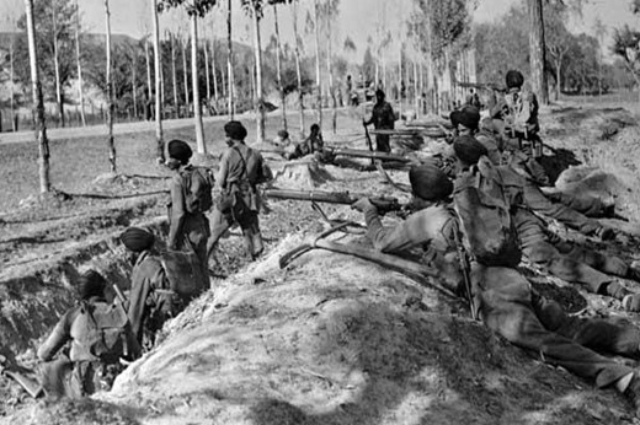
The Pakistan Army launched attacks with a Regiment force on the 13th of October 1948 to remove the Indian Army from their strongholds. The attack resulted in fierce fighting in the Richmar Gali region, as well as heavy gun and mortar fire. The communication connections were destroyed by hostile fire. The then Lance Naik Karam Singh was heading an advanced station in the area at the time. The enemy troops vastly outnumbered the Sikh Regiment by a proportion and attacked their station eight times. Lance Naik Singh rushed around supporting his comrades and fighting the enemy while the Indian army fought ferociously.
When their ammunition supplies ran out, Lance Naik Singh was sent to the company's main position. He was injured, but he never stopped fighting, and he assisted in the rescue of two of his teammates.
They were bombarded by enemy fire, making it nearly difficult for them to escape. But Lance Naik Singh, at the time, did not hesitate and went from place to place, motivating his soldiers to battle and charging the enemy with his grenades. Despite being severely injured, he refused to be evacuated. He fought two opponents hand to hand and severely wounded them to death during the fifth hostile attack. His acts energized his troops while weakening the opponents. Finally, on the night of October 13th, they defeated the final attack. The opposing forces had lost approximately 300 men, while the Sikh regiment had lost about 15 men. The enemy was unable to take even a single bunker.

Lance Naik Karam Singh was given the revered Param Vir Chakra for his utter fearlessness and concern for his own life in the service of his country. He was the honoree’s first non-posthumous holder. His valour and leadership preserved Tithwal's coveted spot and, in turn, altered the war's outcome. He was the first and only Indian to obtain both the Indian and British governments' highest gallantry medals. He departed from the military as a Subedar and Honorary Captain and passed away on June 20, 1993, at the age of 77, from natural causes.
Major Mitali Madhumita: First Woman Officer to Be Honored With A Gallantry Award
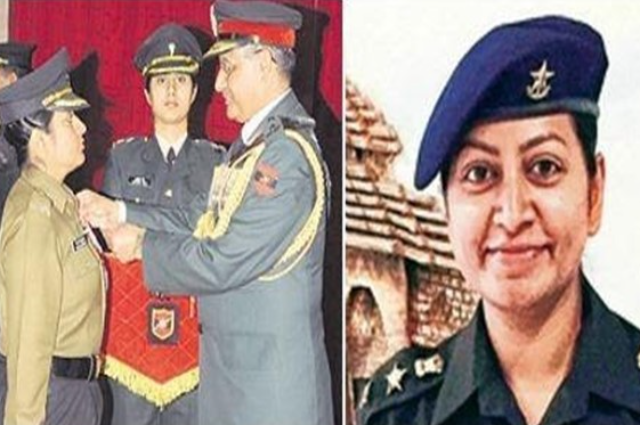
Source: indiatimes
“India is a great country, I am very proud to be Indian. We as soldiers do our duty to the best we can do, and we are here to safeguard the nation all the time, so you can peacefully rest, all the time.”- Lt Col Mitali Madhumita (rank had risen as of 2020)
February twenty-sixth, 2010. Kabul was jolted awake by a tremendous explosion and gunfire early the next morning. Major Mitali Madhumita, who was on a United Nations mission in Kabul, was one of them. The first thing she did was verify her coworkers' safety, as was customary in Kabul at the time. When she didn't hear back, she contacted others, only to learn that the Indian embassy in Kabul had been attacked by a suicide bomber.
Madhumita dashed to the scene for help because there had been no motor movement since the attack. To her surprise, she discovered that the majority of her coworkers had been hurt, that bullets were streaming, and that grenade blasts were taking place. She performed what she was taught to do, she rushed in completely unarmed to save people. She rescued as many as 19 people buried under the rubble, including seven Indians, and gathered local volunteers to seek medical treatment. Major Madhumita was awarded the Sena Medal for Gallantry for her bravery and courage above and beyond the call of duty, making her the first woman to receive the medal.
Captain Manoj Kumar Pandey
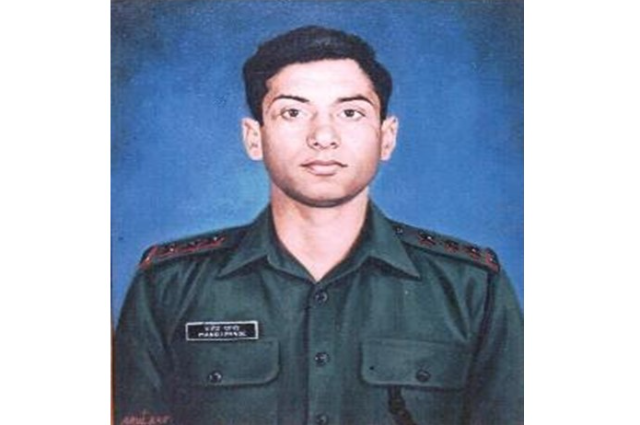
Source: honourpoint
Captain Manoj Pandey was from Rudha village in the Kamlapur tehsil of Uttar Pradesh's Sitapur district. Capt Manoj was the eldest of three brothers and a sister born to Shri Gopi Chand Pandey and Smt Mohini Pandey. He attended UP Sainik School in Lucknow, where he confirmed his desire to join the army and established the groundwork for his future career. He was chosen to attend the National Defence Academy in order to pursue his ambition of becoming an officer in the Army. He enrolled in the NDA's 90th course and was commissioned into the Indian Army's 1/11 Gorkha Rifles, a unit noted for its brave troops and its great accomplishments.
Kargil War: 03 July 1999
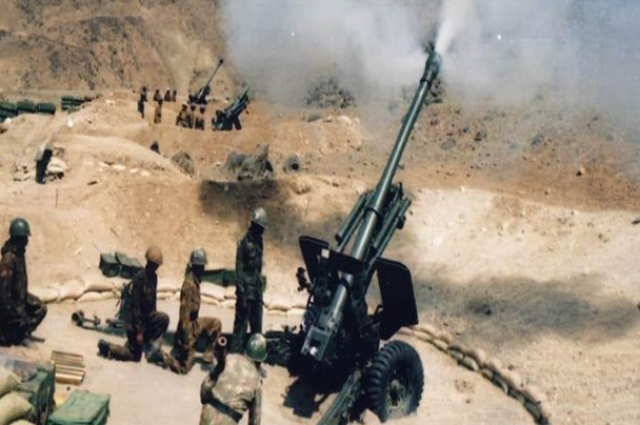
Pakistani soldiers had crossed the LOC in the Mushkoh, Drass, Kaksar, and Batalik areas by early May 1999. Each sector's deployment ranged from 4 to 8 kilometres across the LOC. Artillery and air support were unable to dislodge enemy units that were not within visual range at numerous critical sites. The Indian forces were left with little choice but to send up infantry for direct attacks. In the Batalik area, one such mission was planned, and 1/11 GR was tasked with capturing Khalubar. The mission was assigned to the 1/11 GR's 'B' company, with Capt Manoj heading Platoon No 5. Capt Manoj had previously been a member of the team that took Jaubar Top and built the first post there.
On his route to Khalubar on the night of July 2/3, 1999, Capt Manoj and his troops headed off towards the Pahalwan Chowki, which is situated at a height of 19700 feet. The advance force was met with heavy and continuous hostile fire from all sides of the hilltop as it advanced. Under heavy artillery fire, Capt Manoj rapidly manoeuvred his battalion to an opportune position, dispatched one unit to clear enemy targets on the right, and cleared hostile positions on the left. With the loud battle cry "Jai Mahakali, Aayo Gorkhali," Capt Manoj went ahead bravely, demolishing two enemy bunkers. A torrent of bullets injured him in the shoulder and legs as he cleared the third bunker. Unafraid and unconcerned about his severe injuries, he continued to dominate the attack on the fourth bunker, which he blew up with a grenade. He was assaulted in the head by a bullet as he was hitting his target. Capt Manoj was martyred at the age of 24 after succumbing to his injuries.
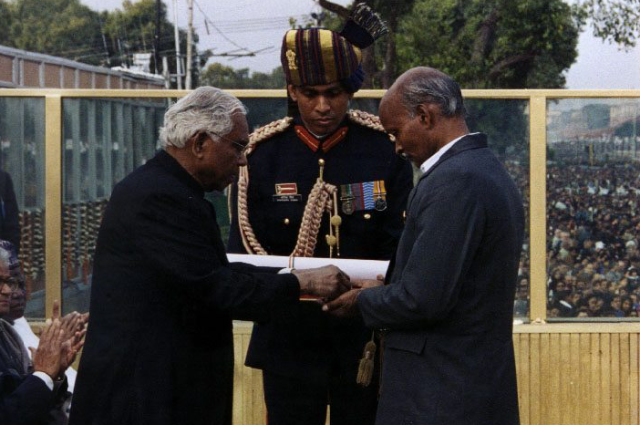
For his extraordinary bravery, dedication, and commitment, Capt Manoj Kumar Pandey was awarded the nation's highest gallantry honour, the "Param Vir Chakra."
Major Satish Dahiya
Major Satish Dahiya was born on September 22, 1985, in Banihari village in Haryana's Mahendragarh district. Maj Dahiya, the lone child of Shri Achal Singh Dahiya and Smt Anita Devi, finished his education in Uttar Pradesh and went on to study at Rajasthan University. After that, he went into the army and was recruited into the Army Service Corps, the Indian Army's logistic supply branch, on December 12, 2009.

Source: honourpoint
Major Dahiya was assigned to the 30 RR Battalion, which was stationed in the J&K area for counterinsurgency operations, after working with his regiment for a few years. Maj Dahiya was involved in numerous counterinsurgency operations while serving with the 30 Rashtriya Rifles regiment.
- Handwara Operation: 14 Feb 2017
On February 14, 2017, intelligence agencies reported the involvement of militants in the J&K district of Handwara. After reviewing the precise inputs, security forces decided to undertake a joint operation with J&K police and the army's 30 RR unit to seize the militants. The task force went into operation, and the execution began around 5 p.m. on February 14, 2017. The extremists were holed up in a residential structure, according to information, and the joint team erected a cordon surrounding the potential spot.
When the army confronted them, the terrorists opened fire from their hiding. An intense gunfight ensued, which lasted several hours. Maj Satish Dahiya was in charge of the operation, strategically manoeuvring his men to cut off all insurgent escape routes. In their desperation, the insurgents turned to indiscriminate and heavy fire towards the troops. Maj Dahiya and his buddies reacted with pinpoint fire, killing three terrorists and chasing the others downhill.
Maj Dahiya, oblivious to his own safety, pursued the fleeing terrorists and killed another, but he was hurt in his right thigh as well. Ignorant of his wounds, he followed the escaping terrorists and killed another, but this time he was shot in the abdomen by nearby enemy fire and fell down. Maj Dahiya was transported for medical treatment; however, he died on the route to the hospital from his injuries and was martyred.
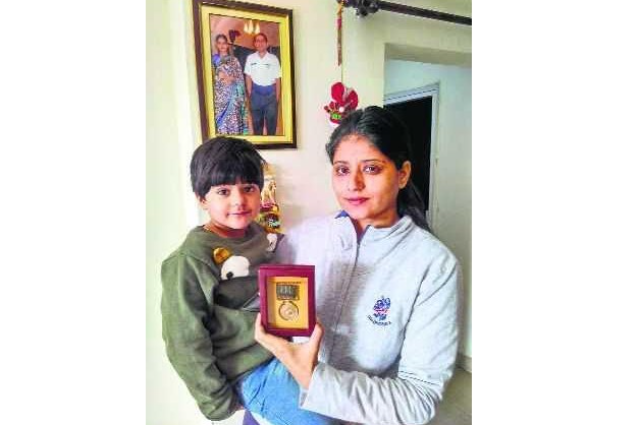
Maj Satish Dahiya was a brave soldier and a determined officer who dedicated his life to serving his country in the Indian Army's great tradition. Maj Satish Dahiya received the "Shaurya Chakra" gallantry medal for his unwavering bravery, courage, mental strength, and great sacrifice.
Flight Officer Gunjan Saxena
Gunjan, who was born in Lucknow in 1975, came to Delhi to study Physics at Hansraj College. Following her education, Gunjan enrolled in the Delhi Flying Club at Safdarjung for aviation training, and in 1994, she joined the Indian Air Force alongside 24 other women, making her the first batch of women to be trained in the IAF.
When the tension between India and Pakistan worsened in 1999, Gunjan, the daughter of an Army commander, was approached by the Indian Air Force. Her initial assignment was with the 132 Forward Area Control in Udhampur (FAC). Gunjan was barely 25 years old when she was instructed to fly in Srinagar, and she consented, creating history as the first female combat pilot.
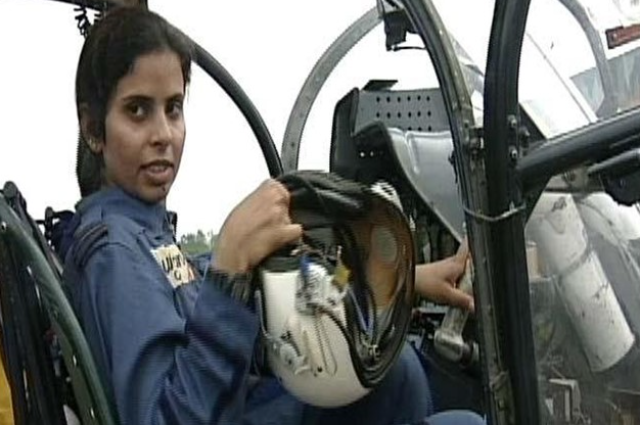
Source: ndtv
Flight Officer Gunjan Saxena created a record as the first woman IAF officer to fly in a combat zone throughout the Kargil War. Gunjan Saxena was one of the 25 young women that made up the first class of female IAF training pilots in 1994. Even during Kargil conflict, Saxena piloted dozens of helicopter missions through the conflict zone, dropping supplies and evacuating injured Indian Army soldiers. She later became the first woman to receive the Shaurya Vir Award, which is given for gallantry, bravery, or self-sacrifice while not engaging in direct combat with the enemy.
Major Sandeep Unnikrishnan
Maj Unnikrishnan graduated from the 94th Course of the National Defence Academy (NDA) at Pune, Maharashtra, in 1995. According to his NDA comrades he was Selfless, generous, and patient and composed. On July 12, 1999, he was recruited as a lieutenant in the 7th Battalion of the Bihar Regiment (Infantry).
He was chosen to join the National Security Guards after serving in the Indian Army for two years in different areas in Jammu & Kashmir and Rajasthan during counter-insurgency operations. He was appointed to the NSG's Special Action Group (SAG) in January 2007 after completing his training and participating in numerous NSG missions. Unnikrishnan accomplished the 'Ghatak course' (at the Commando Wing (Infantry School), Belgaum), the Army's most intensive training course, getting an "Instructor Grading" and recognition. He choose to join the NSG commando force on a deputation basis in 2006.
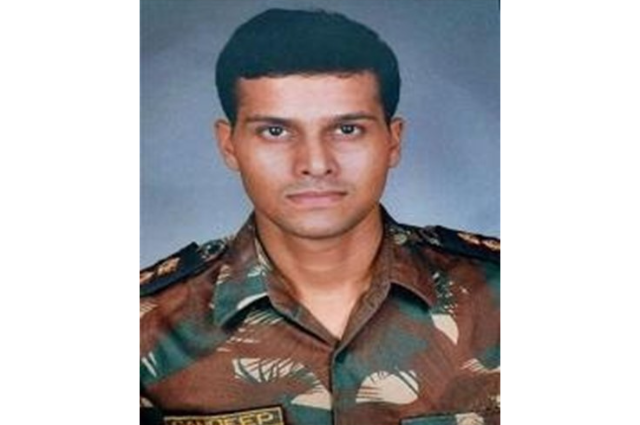
Major Sandeep also took part in Operation Vijay in July 1999, where he was stationed at the forward stations in the face of Pakistani artillery and small weapons fire. Major Unnikrishnan commanded a team of six soldiers on the evening of December 31, 1999, and they were able to build a post 200 metres from the opposite side despite intense opposition and bombardment.
Role in Operation Black Tornado: Nov 2008
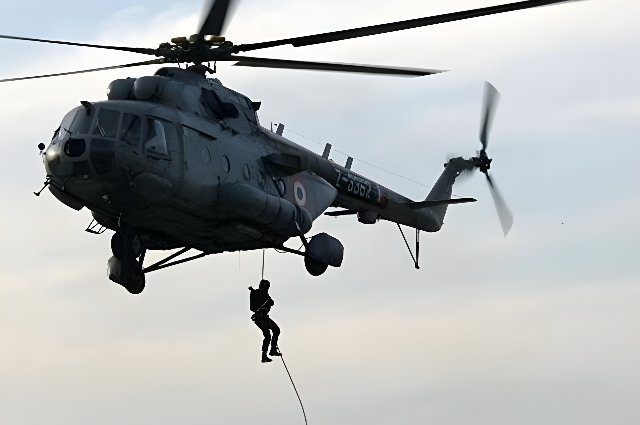
“Do not come up, I will handle them"
These were the last words of our respected Indian Army officer, Major Sandeep Unnikrishnan, as said by his fellow NSG officers.
Several prominent structures in South Mumbai were targeted on the night of November 26, 2008. The 100-year-old Taj Mahal Palace Hotel was one of the buildings where hostages were taken. Major Unnikrishnan led the 51 Special Action Group (51 SAG) team that was deployed to the hotel to rescue the inmates. He reached the hotel with a group of ten troops and took the stairwell to the sixth floor. The squad suspected attackers on the third floor as they approached the stairs. In a room that was closed from the inside, a few women were confined as captives.
The crew decided to break down the door, and when they did, they were met by a storm of terrorist fire. Major Unnikrishnan's comrade, Commando Sunil Yadav, was struck by the attackers' bullets. Major Unnikrishnan put up a gunfight with the offenders and secured Yadav's escape.
Major Unnikrishnan then followed the terrorists who had fled to a different floor of the hotel. He was shot multiple times during the following fight, which ended fatally. His remarkable bravery and leadership inspired his comrades to neutralize all terrorists and successfully accomplish the mission.
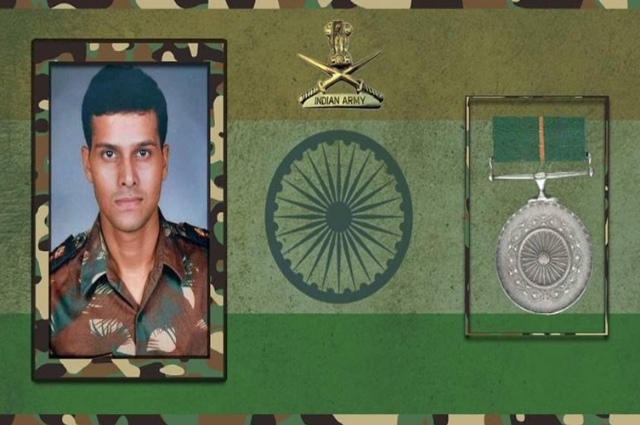
For the exceptional heroism, persistent fighting spirit, and heroic sacrifice, Major Sandeep Unnikrishnan was awarded the nation's highest peacetime gallantry medal, the "Ashok Chakra."
Lt Kiran Shekhawat

Source: honourpoint
Lt Kiran Shekhawat was born in Mumbai on May 1, 1988, to a Naval family. She attended Vishakhapatnam's Kendriya Vidyalaya-II and later earned a Bachelor of Science degree from Andhra University. After that, she previously worked at a private bank before enrolling at the Indian Naval Academy in Ezhimala, Kerala, in 2010. In January 2011, she enrolled in the 'Observer School,' and in February 2012, she received her desired 'wings.' She joined INAS 311 "Kites'' as her first duty after obtaining her wings and serving as a mission controller.
Lt Kiran Shekhawat married Lt Vivek Singh Chhoker, a fellow naval officer from Kurthala in Gurgaon, where her mother-in-law Sunita Chhoker was a sarpanch and the family-owned some agricultural land, in February 2013. She then joined the Indian Naval Air Squadron (INAS) 310, a renowned IW squadron known as the Cobras, after a successful stint at INS Dega. She was stationed at numerous Naval installations during her five-year service until being relocated to Goa in 2015. She was documenting the environment charts and several other features required for intelligence analysis during the ill-fated training combat mission because she was a specialist in intelligence operations.
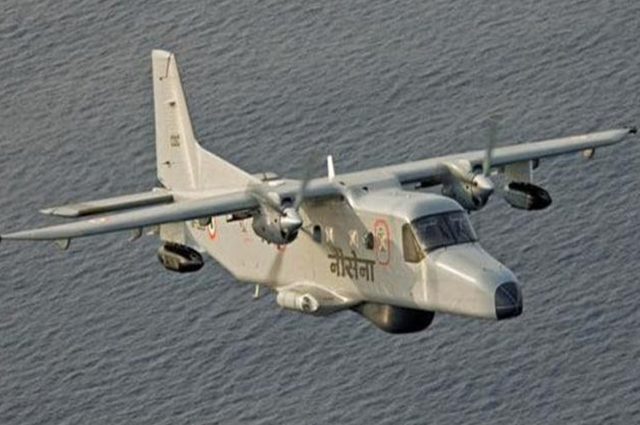
Source: indiatoday
Lt Kiran Shekhawat, co-pilot Lt Abhinav Nagori, and Commander Nikhil Joshi were flying the Indian Navy Dornier when it crashed during a night combat mission on March 24, 2015. Lt Kiran was flying operational flights over the ocean in a combat position as an observer, following and attacking hostile ships violating the country's maritime boundaries. Two days after the crash, her body and that of her co-pilot, Lt Abhinav Nagori, were discovered, while the pilot, Commander Nikhil Joshi, was saved by a fisherman. The Dornier's wreckage was discovered 60 metres beneath the surface off the coast of Goa. Lieutenant Shekhawat's body was discovered within the plane's cabin.
Lt Kiran Shekhawat was a fearless and dedicated soldier who made history as the first female Naval officer to die in combat. Lt Kiran Shekhawat's contribution to the country will be remembered forever, and her legacy will continue to encourage succeeding generations of Indians.
Captain Vikram Batra
“Either I will come back after hoisting the tricolour, or I will come back wrapped in it, but I will be back for sure.” - Capt. Vikram Batra
Captain Vikram Batra was well-liked by his classmates and teachers, and he excelled in all subjects at school. During the Kargil War, he was known by the Code-name Sher Shah. He was born on September 9, 1974, in Ghuggar village near Palampur, Himachal Pradesh, to a middle-class family. He was well-liked by his classmates and teachers, and he excelled in all disciplines at school. He was also an avid sportsman who participated in all extracurricular activities.
Captain Vikram had a green belt in karate and had participated at the national level in table tennis. He was selected North India's finest NCC cadet (Air Wing). Captain Vikram Batra grew up with a strong sense of patriotism and a desire to serve in the military. After earning his Bachelor's degree in 1995, he began studying for the Combined Defence Services (CDS) examination. His ambition came true in 1996 when he passed the CDS examination and was inducted as a lieutenant at the Indian Military Academy.
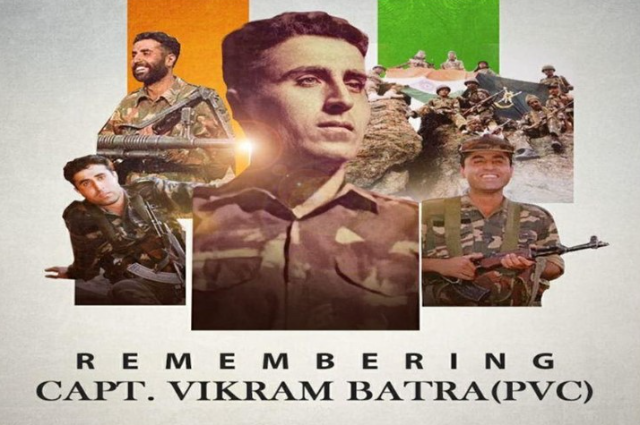
Source: truescoopnews
Captain Vikram Batra was inducted into the 13 JAK Rifles after being chosen to enroll at the Indian Military Academy, Dehradun, in the Jessore Company of the Manekshaw Battalion in 1996. During the Kargil War in 1999, he was raised to the rank of Captain.
Captain Vikram Batra's Delta Company was instructed to reclaim one of the most difficult and critical peaks, peak 5140, on June 19 from the sub-sectors of Drass and Batalik. He and his Delta Company intended to surprise the enemy by attacking head back. Captain Batra and his troops planned to approach the hill from the rear, at a height of 17,000 feet, to catch his opponents off guard. They ascended the rough hill, but as they reached the summit, Pakistani soldiers used machine gunfire to press troops to the rockface.
Lt Batra and five of his troops were undeterred and reached the top, where they tossed two grenades at the machine gun stations. After being critically injured during the battle, Lt Batra reassembled his men and finished the mission despite killing three soldiers in a close battle.

Lt Batra's bravery motivated his soldiers to fight bravely, and the Point 5140 was eventually taken. "Chanakya...it's Shershah reporting!!" said Lt Batra on the radio at 4:35 a.m. on June 20, 1999. The post has been captured! "Yeh Dil Maange More" became the catchphrase during the Kargil War later on. The triumph opened the way for victories at Point 5100, Point 4700, Junction Peak, and 'Three Pimples,' among others.

Capt Batra's valor, companionship, and commitment were outstanding, and he will be remembered in war history as a warrior. For his extraordinary courage, persistent determination, guidance, and heroic sacrifice, Capt Vikram Batra was awarded posthumously the nation's highest gallantry medal, the "Param Vir Chakra."
Conclusion:
As rightly trained in the motto of Officers Training Academy as a soldier,
“We live by chance, We love by choice, We kill by profession”.
Apart from these soldiers in Indian defence forces, there have been many other Bravehearts who have laid down their lives for protecting our motherland. Be it the India-Pakistan war of 1971 and 1965 or during Kargil war, Indian soldiers have always accomplished in neutralizing their enemies and maintaining security in the country. A soldier is the one who saves patriots of their country through sleepless nights in order to not give an opportunity to any terrorist to cross the border freely.
With commitment, sacrifices, competency, and strategy implementation, India's armed services have established and maintained their credibility. They are not only the nation's protectors but also the people's armed forces, with recruits coming from all around the country. The people of India, who are the most essential part of our country, regard them as secular, positive, and impartial. The military is proud of this accomplishment and image, and I am confident that they will continue to do so in the future.
. . .
Reference:
- everydaypower.com
- www.indiatoday.in/information/story
- media.neliti.com/media/publications
- www.honourpoint.in/profile/major-sandeep-unnikrishnan
- www.news18.com
- www.honourpoint.in/profile/capt-vikram-batra
- www.honourpoint.in/profile/hon-capt-karam-singh
- www.indianarmy.nic.in
- www.honourpoint.in/profile/captain-manoj-kumar-pandey
- www.honourpoint.in/profile/major-satish-dahiya
- m.femina.in/trending/achievers/mitali-madhumita
- www.thebetterindia.com
- indianexpress.com
- www.honourpoint.in/profile/lt-kiran-shekhawat
